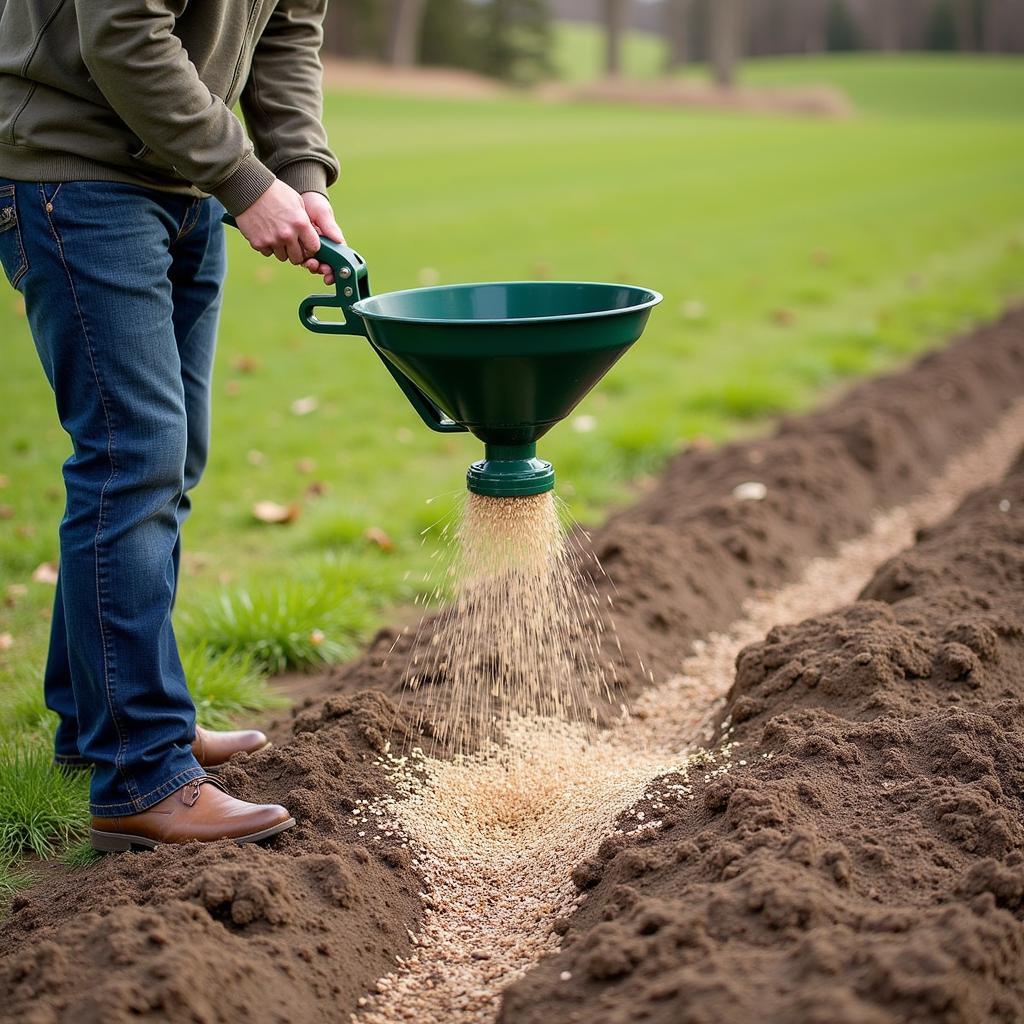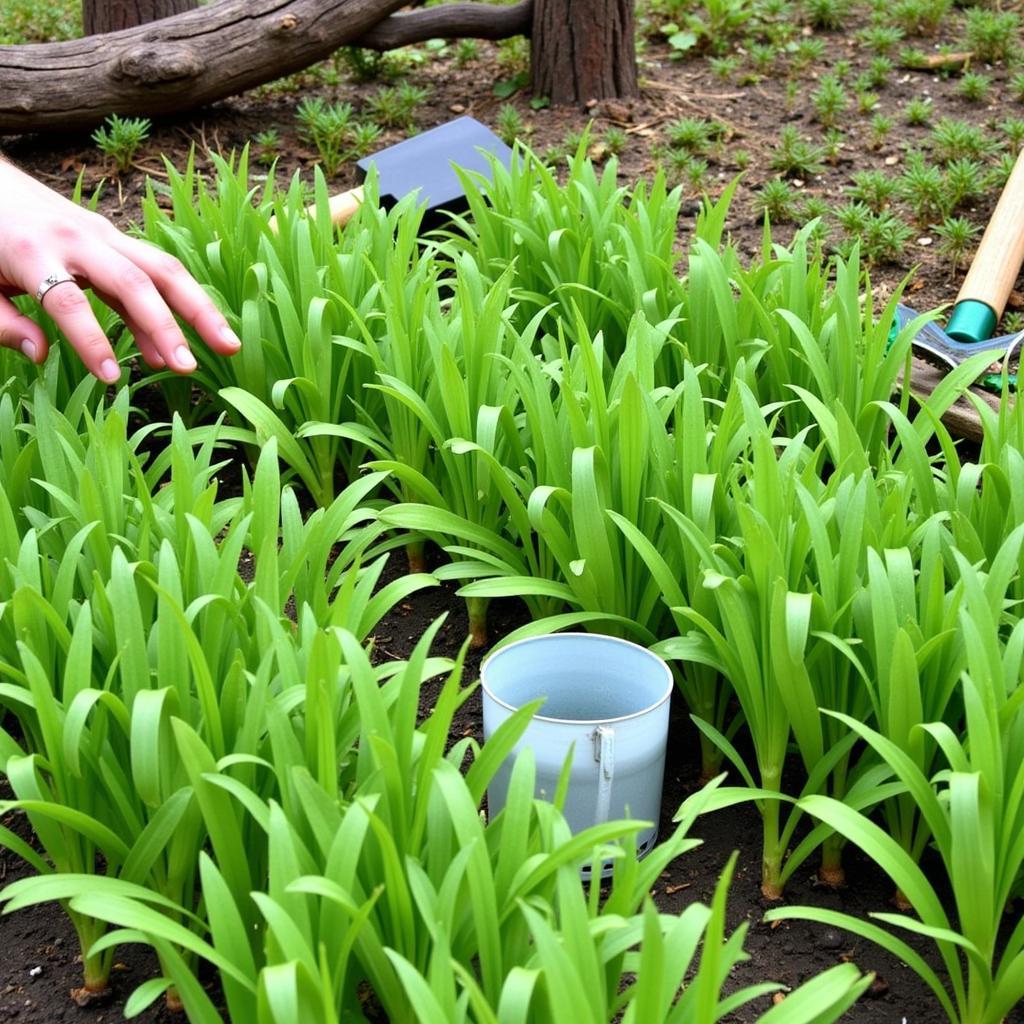Spring Food Plots are a critical component of a successful wildlife management strategy, offering essential nutrition for deer and other animals during a crucial period of growth and reproduction. Properly planned and executed, your spring food plots will help ensure a healthy and thriving wildlife population. Let’s dive into the essential steps to create and maintain thriving spring food plots.
Check out our guide on spring food plots for deer for more specific advice on attracting deer to your property.
Understanding the Importance of Spring Food Plots
Spring is a time of renewal and growth, and for wildlife, it signifies the start of fawning and the need for high-quality forage to support lactation and antler development. Spring food plots provide this crucial nutrition when natural food sources may be scarce or less nutritious. A well-balanced spring food plot can mean the difference between a healthy fawn crop and a struggling one. This is especially true in areas where natural browse is limited due to overpopulation or habitat loss. Providing diverse food plots also helps to reduce browsing pressure on native vegetation, contributing to overall ecosystem health.
Selecting the Right Seed Mix for Your Spring Food Plots
Choosing the appropriate seed mix is paramount to the success of your spring food plots. Consider the specific needs of the target wildlife in your area. Deer, for example, benefit from a blend of legumes and grasses. Legumes like clover and alfalfa are rich in protein, while grasses offer essential carbohydrates.
What are your goals for your spring food plots? Are you aiming to provide early-season forage, extend the growing season, or attract specific wildlife? Different seed mixes will cater to different objectives. Consider soil type and pH when making your selection. A soil test can provide valuable insights and help you choose the best seed mix for your specific conditions.
 Spring food plot seed mix with clover and alfalfa
Spring food plot seed mix with clover and alfalfa
Preparing the Soil for Optimal Growth
Soil preparation is as crucial as choosing the right seed mix. Before planting, clear the area of any existing vegetation. This can be done through tilling, disking, or herbicide application. Ensure that the soil is loose and well-drained. Amend the soil with lime or fertilizer based on your soil test results. This helps to create an ideal environment for seed germination and growth. Compact the soil slightly after seeding to ensure good seed-to-soil contact.
Looking for specific recommendations? Visit our page on deer food plots for spring and summer.
Planting and Maintaining Your Spring Food Plots
Planting depth and spacing are crucial factors. Follow the recommendations provided with your chosen seed mix. Water the plot regularly, especially during dry periods. Monitor for weed growth and control as needed. A healthy spring food plot requires ongoing maintenance. Regular fertilization and mowing can help to promote vigorous growth and extend the lifespan of your plot.
 Planting spring food plot seeds
Planting spring food plot seeds
Choosing the Right Location for Your Spring Food Plots
Consider sunlight exposure, water availability, and proximity to bedding areas when selecting a location. Ideally, your spring food plot should receive at least six hours of sunlight per day. Avoid areas prone to flooding or standing water. Locate your plot near bedding areas to provide easy access for wildlife.
Do you want to learn more about planting specifically for deer? Check out our article on deer food plots for spring.
Common Spring Food Plot Mistakes to Avoid
Overseeding is a common mistake. While it might seem like more seed will lead to a thicker plot, it can actually hinder growth by creating competition for resources. Improper soil preparation is another frequent error. Neglecting to test your soil or amend it based on the results can lead to poor growth and reduced yields. Finally, neglecting to control weeds can quickly stifle the growth of your spring food plot.
 Maintaining a spring food plot
Maintaining a spring food plot
“A healthy spring food plot requires a thoughtful approach, from seed selection to ongoing maintenance,” says wildlife biologist Dr. Sarah Miller. “It’s not just about planting seeds; it’s about creating a sustainable food source for wildlife.”
“Don’t underestimate the importance of soil preparation,” adds experienced land manager, John Davis. “A healthy soil foundation is the key to a successful spring food plot.”
Conclusion
Spring food plots are a vital tool for supporting wildlife populations. By following these guidelines, you can create a thriving spring food plot that provides essential nutrition for deer and other animals during a critical time of year. Remember to choose the right seed mix, prepare the soil properly, and provide ongoing maintenance. Your efforts will be rewarded with a healthy and vibrant ecosystem. Consider exploring our guide on food plots for deer in spring for additional insights.
FAQ
- What is the best time to plant spring food plots?
- What are the best seeds for spring food plots for deer?
- How do I prepare the soil for spring food plots?
- How often should I fertilize my spring food plot?
- How do I control weeds in my spring food plot?
- What are some common mistakes to avoid when planting spring food plots?
- How can I attract deer to my spring food plot?
You can find more helpful tips and information on our website. See our detailed article on spring deer food plots.
Need further assistance? Contact us at Phone: 02437655121, Email: [email protected] or visit us at 3PGH+8R9, ĐT70A, thôn Trung, Bắc Từ Liêm, Hà Nội, Việt Nam. We have a 24/7 customer service team.